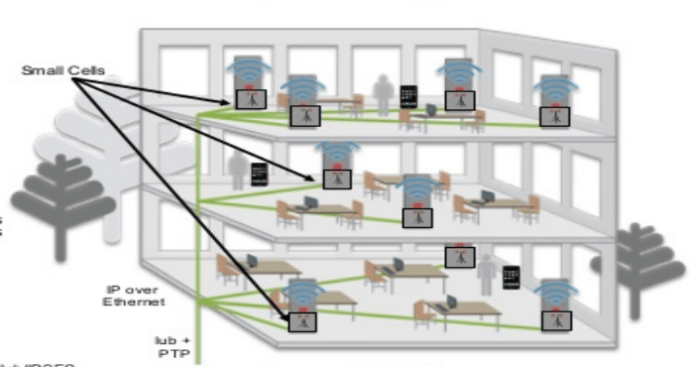Small cells could signal a ‘new neutral’
Neutral host providers like ExteNet Systems and Mobilitie foresee a shift in their business models as network architectures become more distributed. The term “neutral host” means these companies host different carriers on shared infrastructure, just as tower owners often host more than one carrier on a tower. The tower companies try to replicate this business model with small cells and distributed antenna systems, and in these markets they compete against the dedicated neutral host providers. ExteNet, backed by Digital Bridge Holdings among others, and Mobilitie, a privately owned company, are two of the most prominent neutral host providers. These companies see a potential change in strategy as mobile operators have more opportunities to share network infrastructure.
“Neutrality doesn’t mean what it did before,” said Mike Alt, VP of RF network design for ExteNet. Alt said that for years neutral host providers have deployed network infrastructure like cabling, couplers and switchers that could pass the RF signals from multiple carriers who shared a distributed antenna system. Now, the carrier signals are moving closer to the end users through remote radio heads and small cells.
“Because of these new technologies, you are not as tied to having a hub like you’ve had with DAS, where you’ve had a big room in a building where carriers would bring their base stations and so forth,” said ExteNet CTO Tormod Larsen, who added small cell solutions from SpiderCloud Wireless, Ericsson and Airvana (now owned by CommScope) can all support a more distributed architecture that eliminates much of the need for a common equipment room or hub.
“We have invested a significant amount of resources to be prepared to support a more distributed IP-based network architecture,” Larsen added.
Neutral host providers are hoping that before long small cells themselves will become infrastructure that can be shared. SpiderCloud Wireless has already launched an indoor small cell designed to support more than one carrier, and Airspan has developed outdoor small cells that leverage a virtualized radio access network. The idea of sharing a wireless base station, even a small one, is not popular with U.S. carriers, but the cost benefits are clear.
“Multi-standard base stations that host several wireless protocols provide cost effective solutions to improve wireless services within indoor environments,” said Mobilitie president Christos Karmis. “They minimize the amount of cabling and equipment required within a building, which is important to owners who are sensitive to aesthetic impacts. They can also easily be upgraded in the future to accommodate new technology standards and growth in wireless demand at the handset, including video consumption.”
‘5G,’ LTE-U and O-DAS
“The 3GPP standard and the evolution towards 5G network architectures provide for much more efficient approaches while ensuring the integrity of each carrier’s service,” said Larsen. Service integrity and security will be table stakes for carriers if they do test the waters with shared infrastructure.
Larsen said the advent of LTE in unlicensed spectrum will also open up more opportunities for neutral host providers. As U.S. carriers prepare to trial small cells that support LTE in unlicensed bands, none of them have publicly discussed plans to share infrastructure. But Larsen thinks since the shared spectrum carriers will use is not licensed to any of them, it makes sense for a company like ExteNet to own the small cell networks and lease access to multiple customers.
Outdoor architectures are also becoming more distributed, and carriers are often more interested in putting a remote radio head or small cells on a street pole than they are in putting a macro base station in a location more remote from the users. Radio heads can be supported by a centralized radio access network, an approach used by Verizon Wireless and ExteNet in San Francisco.
“Neutrality is becoming the fiber, and the antenna and the pole,” explained Alt. “So you’re starting to see neutrality almost broken up into pieces. It doesn’t really take away the whole neutral host model per se … it shifts the economics and it shifts what is considered shared infrastructure, and we are seeing several derivatives of the model.”
Image source: SpiderCloud Wireless
Follow me on Twitter.

